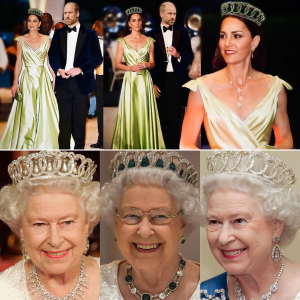Baby boomers: Where were you in 1975? What about 50 years ago? What were you listening to? What music caught your ear, your heart, your soul, your dancing feet?
For those of you born after the great wave post-World War II, what music excited your parents, your aunts and uncles and neighbors? And what trickled down to you as kids? For some of us, it was Loggins and Messina, Lynyrd Skynyrd, Aretha Franklin, the Eagles, Pink Floyd, The Who, Joni Mitchell and Elton John. For others, it was heavy metal or the beginning of punk. Then something happened that transformed the rock world, my world, the world for many of us … the album “Born to Run,” by Bruce Springsteen.
The title song burst onto the music scene with all its energy and rebellion, with “Jungleland” and “Backstreets” offering cinematic and operatic artistry so unusual in the rock world. As a woman fan wrote in a survey I did with a co-researcher, “the record swallowed me whole.“

Last month, I attended a celebration in New Jersey for the 50th anniversary of “Born To Run.” The amazing celebrations were hosted by the Bruce Springsteen Archives & Center for American Music at Monmouth University, an organization that preserves the legacy of Springsteen’s music and also that of other iconic American musicians.
The days before the weekend extravaganza were filled with talks, film showings and live music. These culminated with Saturday’s lineup of people with whom Springsteen worked most closely: E Street band members (including a few originals from 1975), representatives from Columbia Records, and his current and former managers.
The surprise highlight was Springsteen himself, who spoke intensely about the creation of the song as well as the album, and all that was riding on its success. Sunday focused on an academic conference, rejuvenating the pre-pandemic Springsteen symposia. Scores of presenters, including myself and Donna Luff [co-authors of “Mary Climbs In: The Journeys of Bruce Springsteen’s Women Fans”], spoke about the meaning of Springsteen’s work and what has made “Born to Run” in particular so powerful, popular and enduring. On the heels of this milestone celebration is a biopic exploring Springsteen’s life and creative process during the making of the 1982 album “Nebraska,” set to be released on Oct. 24.

So why is it that Springsteen and his work have endured for more than 50 years, and continue to engage old and new fans? Is it the passion, the intensity, the meaning, the fun, the community, the depth, the breadth, the words, or the music?
I would argue, from my own perspective and also from so much of what I heard from Bruce himself and from other academic presenters, that it is all of these. Springsteen reaches into the human psyche and speaks to hurts, questions, issues, losses, identity, challenges and the search for meaning as one navigates the complexities of life. The phrase “Tramps like us” from “Born to Run” resonates with not fitting in and trying to figure out who you are and where you are going. You may not know the way, but you know you have to do something or go somewhere to find yourself and your life.

The women who responded to the surveys that culminated in our book, “Mary Climbs In: The Journeys of Bruce Springsteen’s Women Fans,” — which was reviewed in the Daily Hampshire Gazette two years ago — dug deeply into all that Springsteen and his work means to them, to their lives, to who they are and who they are becoming. Some of the older fans spoke of growing up with Springsteen, and some of the younger ones grew up with parents immersed in his work, so Springsteen has truly been a lifelong companion. I see his music aging as we all age, addressing different issues at 50 and 60 and now into his 70s.
Yet, “Born To Run” is timeless, as evidenced by the age range of our research respondents, in those who attended the anniversary celebration, and those who attend every concert. It is perhaps because that restlessness, that aching need to get out there and become yourself, is so much a part of what we now call the “emerging adulthood” phase of life.
During early adulthood, one is searching for oneself, looking for that ignition that will propel one forward. And that feeling doesn’t necessarily disappear. Midlife and older age are ripe for such searching, with the stakes often higher, and the need for community.
Lesbians in particular are a group that has found resonance with many of Springsteen’s themes. This has been seen in our women fans research, in writings, a talk at the Born To Run 50th anniversary celebration, and even on social media: those who are marginalized need to find oneself and one’s group.

Today, perhaps it is more critical than ever to be able to get into the car and search for oneself and one’s future. In my favorite song from “Born To Run,” “Thunder Road,” — which is about the need to get out and start anew with a companion — we wonder: will Mary climb in at the end and head off with the guy in the car to escape their town and their lives that are holding them back? I hope so.
Lorraine Mangione is a resident of Northampton and the author of “Mary Climbs In: The Journeys of Bruce Springsteen’s Women Fans.” She is Author of the Month at the Northampton Senior Center, where, on Oct. 24, she will give a talk titled “Bruce Springsteen’s Music: How Fandom Helps Us Walk Together.”





